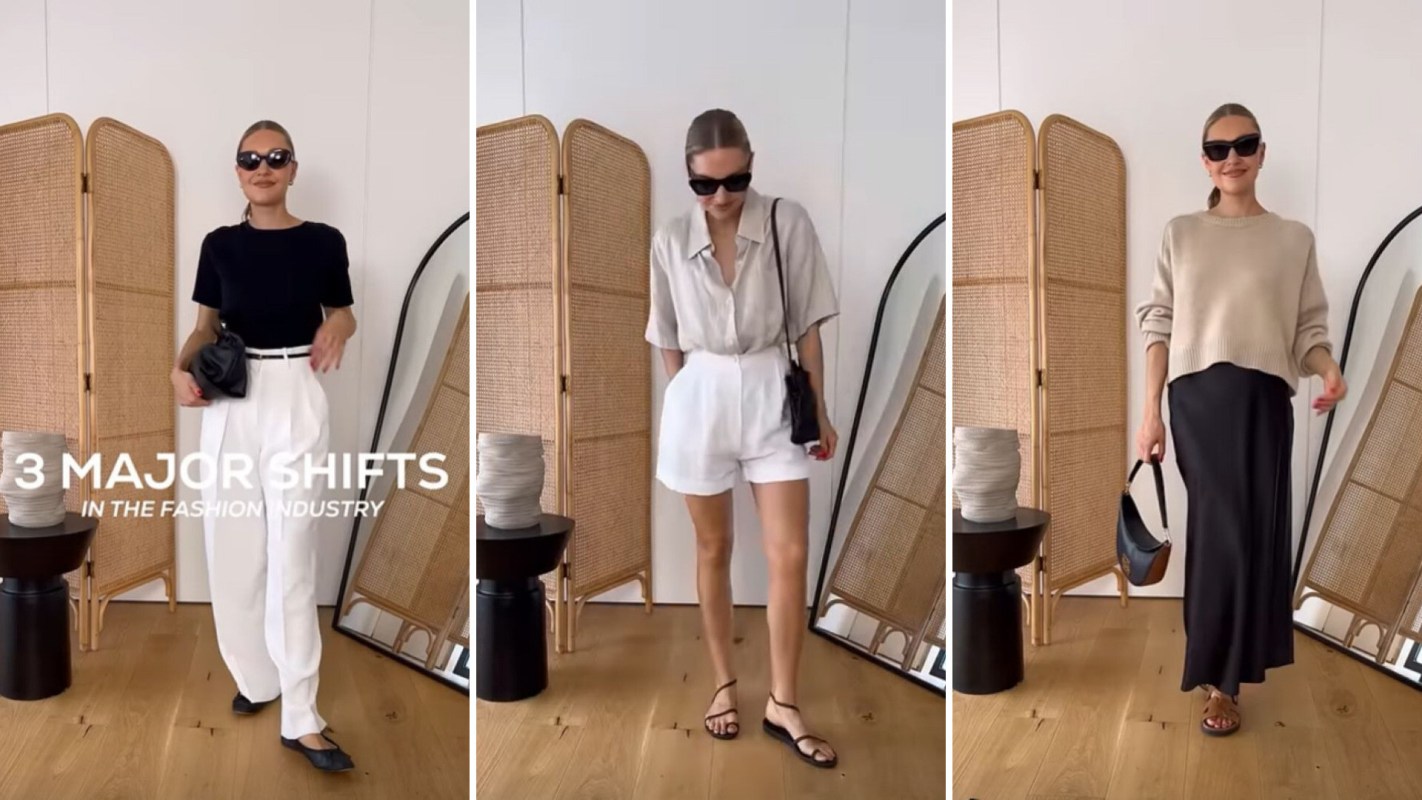The internet can be a minefield for consumerism, but some fashion influencers in recent years have tried to help followers avoid fast fashion, shop second hand, and spot greenwashing.
One such influencer posted about "major shifts" in the fashion industry that are taking some of the power away from fast fashion.
Lydia Tomlinson (@LydiaJaneTomlinson) is a fashion influencer with millions of followers on YouTube and Instagram whose content is focused on "[maximizing] your wardrobe using key pieces you already own." She is based in the United Kingdom, so she may have slightly different stores to shop at, but her messages are universal.
In a YouTube short, Lydia focused on three fashion trends shaping the future of fashion. The three trends she lists are the move toward timelessness, practical wearable fashion, and circular fashion.
The fashion she discusses focuses on comfortable, long-lasting pieces that don't follow the typical trend cycles. More practical clothing also means a shift toward more natural fibers like cotton and linen. Finally, she talks about clothing rental sites, as well as "pre-loved" items.
"I think all three of these shifts go hand in hand to make fashion more accessible, easier, and better for the environment, too."
Fast fashion is an incredibly wasteful part of the clothing industry. According to Earth.org, it requires "about 700 gallons to produce one cotton shirt and 2,000 gallons of water to produce a pair of jeans."
Focusing on more natural fibers when shopping can also help with our growing microplastics issue. Synthetic fabrics are a large contributor to microplastics in the ocean, sloughing off every time you wash your clothes.
Buying fewer new items and more thrifted items can reduce our impact on the environment, and save the average person around $100 a year. Plus, shopping for pre-loved items can lead you to fun vintage finds.
🗣️ What's your primary motivation in shopping at thrift stores?
🔘 Cheaper clothes 🤑
🔘 Trendier items 😎
🔘 Reduced environmental impact 🌎
🔘 I don't thrift 🚫
🗳️ Click your choice to see results and speak your mind
Commenters love the looks she shares and the trend forecasting. One person wrote, "I buy most of my clothes through consignment. Better quality. I rarely buy new."
Another follower said, "I absolutely love this current trend of timeless fashion- I'm here for it"
Join our free newsletter for easy tips to save more, waste less, and help yourself while helping the planet.









